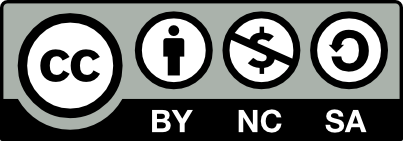In vivo evaluation of marine collagen sponge for wound healing in a rat model

Collagen exerts local wound-healing effects and is widely used in clinical practice, particularly in the form of collagen-based patches, films, and sponges derived from bovine sources. However, such collagen carries disadvantages, including the risk of disease transmission and potential viral contamination. Therefore, collagen from marine invertebrates is being actively investigated for potential clinical applications. The objective of the study is to evaluate the wound-healing potential of collagen from the biomass of the jellyfish (Aurelia aurita). In this study, two types of collagen sponges—one made from acid-soluble collagen modified with sodium alginate, and the other from collagen additionally cross-linked with glutaraldehyde (insoluble)—were evaluated for their wound-healing and immunostimulatory properties in a rat skin wound model. Both formulations demonstrated wound-healing and antifibrotic effects, as well as improved the clinical welfare of animals. The insoluble formulation demonstrated the strongest regenerative effect during the early stage of skin wound healing (day 1), outperforming both the soluble formulation and the negative control. However, only the soluble formulation exhibited anti-inflammatory activity. The insoluble formulation improved postoperative welfare in rats, as evidenced by reduced weight loss and a higher behavioral welfare index relative to the untreated control group. In contrast, the immunostimulatory and epithelialization-accelerating effects of the soluble formulation were weaker than those of the insoluble formulation. Moreover, the soluble sponge exhibited limited granulation tissue vascularization, indicating potential adverse effects during therapeutic application. This work highlights the wound-healing and immunostimulatory potential of collagen sponges derived from A. aurita and supports their further investigation in diverse wound models and subsequent clinical studies.
- Harder J, Schröder JM, Gläser R. The skin surface as antimicrobial barrier: Present concepts and future outlooks. Exp. Dermatol. 2013;22:1-5. doi: 10.1111/exd.12046
- Hall AH, Mathieu L, Maibach HI. Acute chemical skin injuries in the United States: A review. Crit Rev Toxicol. 2018;48:540-554. doi: 10.1080/10408444.2018.1493085
- Geahchan S, Baharlouei P, Rahman A. Marine collagen: A promising biomaterial for wound healing, skin anti-aging, and bone regenera. Mar Drugs. 2022;20:61. doi: 10.3390/md20010061
- Gurtner GC, Werner S, Barrandon Y, Longaker MT. Wound repair and regeneration. Nature. 2008;453:314-321. doi: 10.1038/nature07039
- Martin P. Wound healing-aiming for perfect skin regeneration. Science. 1997;276:75-81. doi: 10.1126/science.276.5309.75
- Sumiyoshi H, Okamura Y, Kawaguchi AT, et al. External administration of moon jellyfish collagen solution accelerates physiological wound healing and improves delayed wound closure in diabetic model mice. Regen Ther. 2021;18:223-230. doi: 10.1016/j.reth.2021.06.008
- Felician FF, Yu RH, Li MZ, et al. The wound healing potential of collagen peptides derived from the jellyfish Rhopilema esculentum. Chin J Traumatol. 2019;22(1):12-20. doi: 10.1016/j.cjtee.2018.10.004
- Hochstein AO, Bhatia A. Collagen: Its role in wound healing. Wound Manag. 2014;4(1):104-109.
- Gomez-Guillen MC, Gimenez B, Lopez-Caballero ME, Montero MP. Functional and bioactive properties of collagen and gelatin from alternative sources: A review. Food Hydrocolloids. 2011;25:1813-1827. doi: 10.1016/j.foodhyd.2011.02.007
- Banerjee P, Suguna L, Shanthi C. Wound healing activity of a collagen-derived cryptic peptide. Amino Acids. 2015;47:317-328. doi: 10.1007/s00726-014-1860-6
- Kulikova YV, Sukhikh SA, Babich OO. Marine collagen extraction methods for regenerative medicine. Regener Org Tiss (Russ). 2024;2(1):29- 45. (In Russ). doi: 10.60043/2949-5938-2024-1-29-45
- Widdowson PJ, Picton JA, Vinc V, Wright CJ, Mearns-Spragg A. In vivo comparison of jellyfish and bovine collagen sponges as prototype medical devices. J Biomed Mater Res B Appl Biomater. 2018;106(4):1524-1533. doi: 10.1002/jbm.b.33959
- Tajbakhsh E, Khamesipour A, Hosseini SR, Kosari N, Shantiae S, Khamesipour F. The effects of medicinal herbs and marine natural products on wound healing of cutaneous leishmaniasis: A systematic review. Microb Pathog. 2021;161(Pt A):105235. doi: 10.1016/j.micpath.2021.105235
- Yamada S, Yamamoto K, Ikeda T, Yanagiguchi K, Hayashi Y. Potency of fish collagen as a scaffold for regenerative medicine. Biomed Res. Int. 2014;2014:302932. doi: 10.1155/2014/302932
- Zhou T, Wang N, Xue Y, et al. Electrospun tilapia collagen nanofibers accelerating wound healing via inducing keratinocytes proliferation and differentiation. Colloids Surf B Biointerfaces. 2016;143:415-422. doi: 10.1016/j.colsurfb.2016.03.052
- Sampath Kumar NS, Nazeer RA, Jaiganesh R. Wound healing properties of collagen from the bone of two marine fishes. Int J Pept Res Ther. 2012;18:185-192. doi: 10.1007/s10989-012-9291-2
- Shalaby M, Agwa M, Saeed H, Khedr SM, Morsy O, El-Demellawy MA. Fish scale collagen preparation, characterization and its application in wound healing. J Polym Environ. 2020;28:166-178. doi: 10.1007/s10924-019-01594-w
- Feng X, Zhang X, Li S, et al. Preparation of aminated fish scale collagen and oxidized sodium alginate hybrid hydrogel for enhanced full-thickness wound healing. Int J Biol Macromol. 2020;164:626-637. doi: 10.1016/j.ijbiomac.2020.07.058
- Pal P, Srivas PK, Dadhich P, et al. Accelerating full thickness wound healing using collagen sponge of Mrigal fish (Cirrhinus cirrhosus) scale origin. Int J Biol Macromol. 2016;93:1507-1518. doi: 10.1016/j.ijbiomac.2020.07.058
- Wang J, Xu M, Liang R, Zhao M, Zhang Z, Li Y. Oral administration of marine collagen peptides prepared from Chum Salmon (Oncorhynchus Keta) improves wound healing following cesarean section in rats. Food Nutr. Res. 2015;59:26411. doi: 10.3402/fnr.v59.26411
- Chen J, Gao K, Liu S, et al. Fish collagen surgical compress repairing characteristics on wound healing process in vivo. Mar Drugs. 2019;17:33. doi: 10.3390/md17010033
- Binlateh T, Hutamekalin P, Benjakul S, Chotphruethipong L. Antioxidant and anti-atherosclerosis activities of hydrolyzed jellyfish collagen and its conjugate with black jelly mushroom extract. Foods. 2024;13(15):2463. doi: 10.3390/foods13152463
- Chiarelli PG, Suh JH, Pegg RB, Chen J, Solval KM. The emergence of jellyfish collagen: A comprehensive review on research progress, industrial applications, and future opportunities. Trends Food Sci Technol. 2023;141:104206. doi: 10.1016/j.tifs.2023.104206
- Ahmed Z, Powell LC, Matin N, et al. Jellyfish collagen: A biocompatible collagen source for 3D scaffold fabrication and enhanced chondrogenicity. Mar Drugs. 2021;19(8):405. doi: 10.3390/md19080405
- Costa R, Capillo G, Albergamo A, et al. A multi-screening evaluation of the nutritional and nutraceutical potential of the Mediterranean jellyfish Pelagia noctiluca. Mar Drugs. 2019;17(3):172. doi: 10.3390/md17030172
- Sewing J, Klinger M, Notbohm H. Jellyfish collagen matrices conserve the chondrogenic phenotype in two- and three-dimensional collagen matrices. J Tissue Eng Regen Med. 2017;11(3):916-925. doi: 10.1002/term.1993
- D’Ambra I, Merquiol L. Jellyfish from fisheries by-catches as a sustainable source of high-value compounds with biotechnological applications. Mar Drugs. 2022;20(4):266. doi: 10.3390/md20040266
- Fernandez-Cervantes I, Rodriguez-Fuentes N, Leon-Deniz LV, et al. Cell-free scaffold from jellyfish Cassiopea andromeda (Cnidaria; Scyphozoa) for skin tissue engineering. Mater Sci Eng C. 2020;111:110748. doi: 10.1016/j.msec.2020.110748
- Addad S, Exposito JY, Faye C, Ricard-Blum S, Lethias C. Isolation, characterization and biological evaluation of jellyfish collagen for use in biomedical applications. Mar Drugs. 2011;9(6):967-983. doi: 10.3390/md9060967
- Balikci E, Baran ET, Tahmasebifar A, Yilmaz B. Characterization of collagen from jellyfish Aurelia aurita and investigation of biomaterials potentials. Appl Biochem Biotechnol. 2024;196(9):6200-6221. doi: 10.1007/s12010-023-04848-5
- Rachmawati R, Hidayat M, Permatasari N, Widyarti S. Jellyfish (Aurelia aurita) collagen scaffolds potential in alveolar bone regeneration. F1000Res. 2021;10:318. doi: 10.12688/f1000research.28402.1
- Barzkar N, Sukhikh SA, Cheliubeeva EY, et al. Aurelia aurita jellyfish collagen: Recovery properties. Food Raw Mater. 2025;13(2):296-305. doi: 10.21603/2308-4057-2025-2-648
- Balikci E, Baran ET, Tahmasebifar A, Yilmaz B. Characterization of collagen from jellyfish Aurelia aurita and Aurelia aurita jellyfish collagen: Recovery properties. Food Raw Mater. 2025;13(2):296-305. doi: 10.21603/2308-4057-2025-2-648
- Sotocinal SG, Sorge RE, Zaloum A, et al. The rat grimace scale: A partially automated method for quantifying pain in the laboratory rat via facial expressions. Mol Pain. 2011;7:55. doi: 10.1186/1744-8069-7-55
- Silina EV, Manturova NE, Artyushkova EB, et al. Dinamics of skin wound healing with the use of injectable regeneration stimulators in rats. Patol Fiziol Eksp Ter. 2020;64(3):54-63. (In Russ). doi: 10.25557/0031-2991.2019.03.54-63
- Alpidovskaya OV. Plasma levels of IL-6, IL-10, IL-18, TNFα under the conditions of tobacco intoxication and after treatment with aminophthalhydrazide. Med Immunol (Russ). 2024;26(3):613-616. (In Russ). doi: 10.15789/1563-0625-PLO-2907
- Surniyantoro HN, Abinawanto, Bowolaksono A, et al. IL-6 and IL-10 levels in rats blood plasma as immune responses post radioiodine (I-131) administration. Asian Pac J Cancer Prev. 2024;25(3):1017-1023. doi: 10.31557/APJCP.2024.25.3.1017



